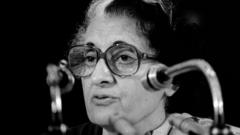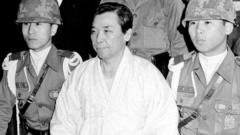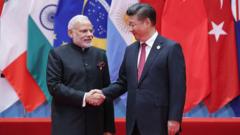Enforced under the guise of national stability, the Emergency saw civil liberties suspended, political dissent suppressed, and a wave of authoritarian policies implemented in India. Historians argue that this period not only highlighted the unyielding power of a centralized government but also serves as a cautionary tale about the threats facing democratic institutions.
The State of Emergency: A Look Back at India’s Authoritarian Pause

The State of Emergency: A Look Back at India’s Authoritarian Pause
An examination of the Emergency declared by Indira Gandhi from 1975 to 1977 reveals the fragility of democracy and the overarching power wielded by the state during this tumultuous period.
At midnight on June 25, 1975, India's vibrant democracy was abruptly halted when then-Prime Minister Indira Gandhi declared a nationwide Emergency. This drastic measure suspended civil liberties, jailed opposition leaders, gagged the press, and transformed the constitution into a mechanism granting excessive power to the executive branch. Over the following 21 months, while India maintained its democratic veneer, it operated in a manner reminiscent of authoritarian rule.
The catalyst for this unprecedented action was a shocking ruling from the Allahabad High Court, which deemed Gandhi guilty of electoral malpractice and annulled her victory in the 1971 elections. Faced with potential political exile alongside a rising tide of public protests led by the influential socialist leader Jayaprakash Narayan, she invoked Article 352 of the constitution, justifying the Emergency on grounds of national instability.
Historian Srinath Raghavan emphasizes that while the constitution permits broad powers during an Emergency, the resultant increase in executive power under Gandhi was extraordinary, often impervious to judicial critique. During this time, more than 110,000 individuals were imprisoned, including prominent opposition figures such as Morarji Desai and LK Advani. Various political factions faced bans, prisons overflowed, and allegations of torture became routine.
Judicial independence suffered tremendously, with courts failing to challenge the detentions. In Uttar Pradesh, where the most arrests occurred, not a single detention order was overturned, effectively nullifying the citizens' rights to seek judicial intervention.
The Emergency era also witnessed a controversial state-run family planning initiative that led to the sterilization of an estimated 11 million Indians, many through coercive measures attributed to Sanjay Gandhi, Indira's son. Reports emerged of officials compelling laborers to undergo vasectomies to secure employment, and violence associated with these programs resulted in significant unrest.
Alongside the population control measures, a sweeping urban cleanup effort led to the demolition of around 120,000 slums, displacing approximately 700,000 residents in Delhi alone. This gentrification, poorly received by many, was particularly brutal in neighborhoods like Turkman Gate, where confrontations with police resulted in fatalities among protestors.
The press faced severe repression; newspapers received stringent censorship orders, leading to blank editorial spaces as a form of protest against media restrictions. Reports of police actions and mishaps in prisons were silenced overnight, while foreign correspondents were expelled for refusing to conform to the censorship requirements.
In July 1976, the Youth Congress was co-opted by Sanjay Gandhi's individual agenda, integrating his personal programs with state policy. This occurrence marked a concerning blend of party and state control that diminished political pluralism.
Despite its notoriously grim reputation, some characterized the Emergency as a period of enforced order and efficiency. For example, industrial output improved, public services resumed seamlessly, and law and order prevailed, creating a perception of initial stability in a country that had long witnessed chaos.
Critics have pointed out that the measures taken during the Emergency primarily affected northern India, while southern states demonstrated a greater resistance due to robust regional parties. Ultimately, the Emergency concluded in March 1977, following a call for elections that resulted in the Congress party's unexpected defeat.
The episode is remembered as an authoritarian interlude in Indian history, yet it serves as a reminder of the vulnerability of democratic structures. As historian Gyan Prakash noted, the suspension of constitutional rights represented a stark departure from the ideals of the nation’s founders. He warns that recognizing the Emergency merely as a historical aberration risks underestimating the fragility of current democratic practices. The reflections on this period also underscore the dangers of adulation for political figures, reiterating the importance of vigilance in preserving freedoms and democratic norms.




















